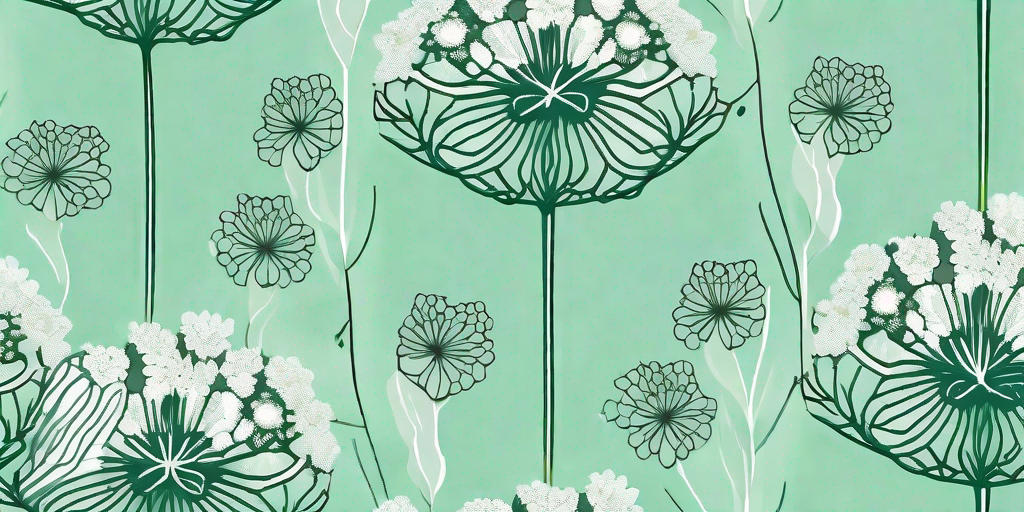
Welcome to the world of flora, where the beauty of nature is showcased in all its glory. Today, we're going to explore a floral wonder that's as regal as its name suggests - Queen Anne's Lace. This plant, also known as wild carrot, has a charm that's hard to resist. So, let's dive in and unravel the beauty of this botanical marvel.
The History and Origin of Queen Anne's Lace
The Royal Connection
Queen Anne's Lace is named after Queen Anne of England, who was an expert lace maker. The flower's intricate design is said to resemble the delicate pattern of lace, hence the name. But don't let the royal connection fool you, this plant is as wild as they come.
It's also known as the wild carrot, and yes, it's related to the carrot that Bugs Bunny loves so much. The wild carrot is a biennial plant native to Europe and southwest Asia, but it has been naturalized in North America and Australia.
The Folklore
Like many plants, Queen Anne's Lace has its share of folklore. One story suggests that Queen Anne pricked her finger while making lace, and a single drop of blood fell onto the lace, which is symbolized by the tiny, dark-colored flower often found in the center of the Queen Anne's Lace flower cluster.
Another tale suggests that the plant was used as a contraceptive in the Middle Ages, and was also used to treat ailments like kidney stones and urinary tract infections. However, it's important to note that these uses are based on folklore and not on scientific evidence.
The Aesthetics of Queen Anne's Lace
The Flower
The flower of Queen Anne's Lace is a sight to behold. It features a cluster of tiny white flowers, arranged in a delicate, lace-like pattern. The flower cluster is usually flat on top, but it can also be slightly domed. The flower cluster can be up to 5 inches in diameter, and it's usually surrounded by a ruff of green bracts.
The center of the flower cluster often features a single dark-colored flower, which is said to represent the drop of blood from Queen Anne's pricked finger. This tiny flower is a unique feature that sets Queen Anne's Lace apart from other flowers.
The Foliage
The foliage of Queen Anne's Lace is just as attractive as its flowers. The leaves are finely divided and feathery, resembling the leaves of a carrot. The plant can grow up to 4 feet tall, and it has a sturdy, hairy stem that adds to its wild charm.
The plant is a biennial, which means it completes its life cycle in two years. In the first year, it forms a rosette of leaves and stores energy in its carrot-like root. In the second year, it produces flowers and seeds before dying.
How to Grow Queen Anne's Lace
Choosing the Right Location
Queen Anne's Lace is a hardy plant that can grow in a variety of conditions. It prefers full sun, but it can also tolerate partial shade. It's not fussy about soil and can grow in sandy, loamy, and clay soils. However, it prefers well-drained soil.
The plant is drought-tolerant, which makes it a good choice for xeriscaping. It's also a great plant for naturalizing in meadows or wildflower gardens. But be careful, as it can become invasive in some areas.
Planting and Care
Queen Anne's Lace can be grown from seeds or transplants. If you're growing from seeds, sow them directly in the garden in spring. If you're using transplants, plant them in spring or fall.
The plant requires minimal care. Water it regularly, but be careful not to overwater. It doesn't require fertilization, and it's resistant to most pests and diseases. However, it can attract beneficial insects like ladybugs and lacewings.
Fun Facts About Queen Anne's Lace
- Despite its beauty, Queen Anne's Lace is considered a weed in some areas.
- The plant's root is edible and has a flavor similar to carrots.
- Queen Anne's Lace can cross-pollinate with garden carrots, resulting in some interesting hybrids.
- The plant is a favorite of many pollinators, including bees and butterflies.
Frequently Asked Questions
- Is Queen Anne's Lace poisonous?
No, but it's often confused with poisonous plants like hemlock. Always make sure you've correctly identified the plant before handling or consuming it.
- Can I grow Queen Anne's Lace in a pot?
Yes, but it may not grow as large as it would in the ground. Make sure the pot has good drainage.
- Does Queen Anne's Lace attract wildlife?
Yes, it attracts pollinators like bees and butterflies, and its seeds are a food source for birds.
So there you have it, the lowdown on the beautiful and intriguing Queen Anne's Lace. Whether you're a history buff, a gardening enthusiast, or just someone who appreciates the beauty of nature, this plant has something to offer. So why not add a touch of royal elegance to your garden with Queen Anne's Lace?















